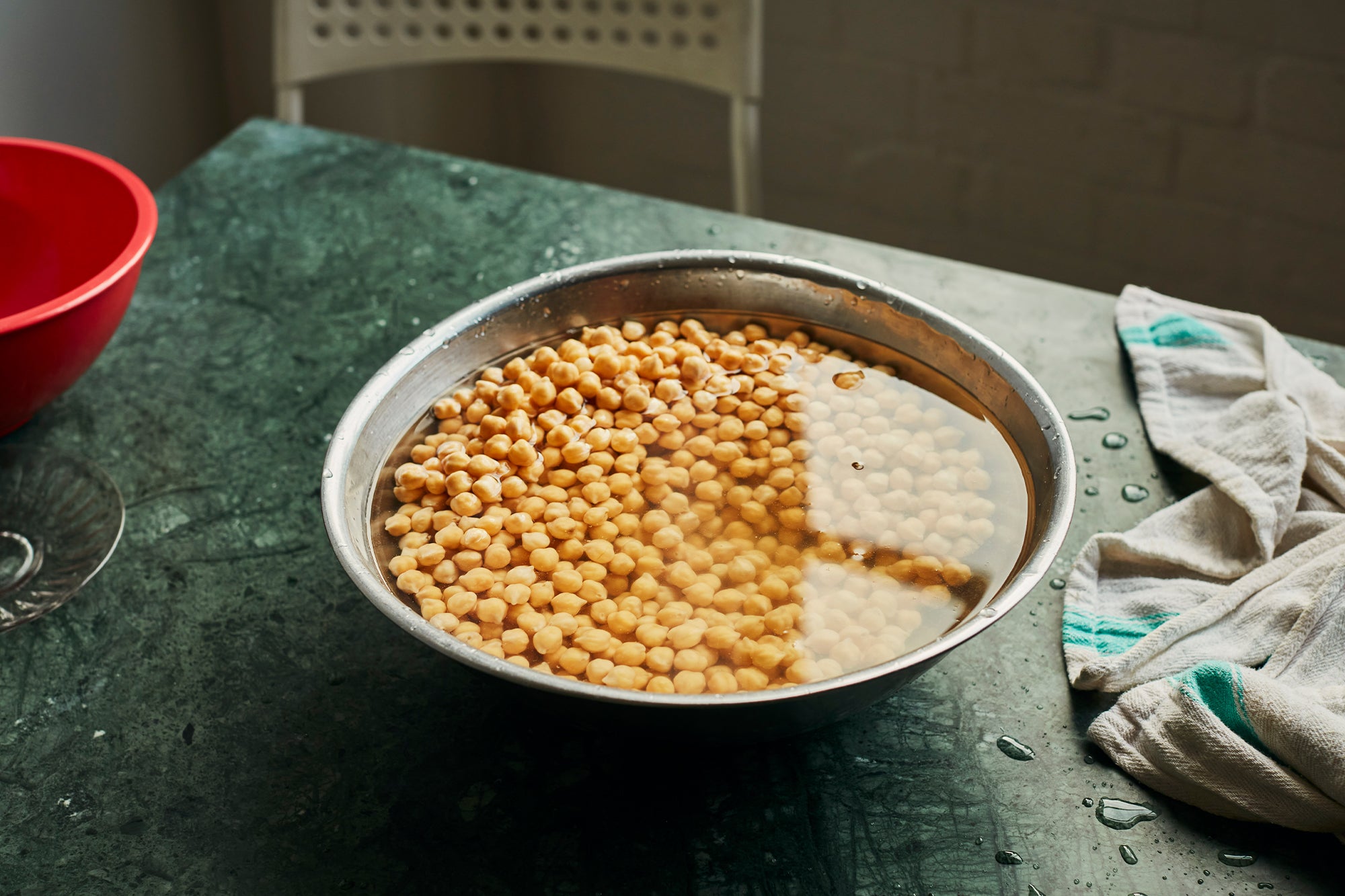Popular searches
Main menu
recipes menu
recipes
locations menu
locations
shop menu
shop
search
Popular searches
Falafel are deep-fried patties made from ground chickpeas or fava beans, mixed with herbs and spices. They have a rich, savoury flavour with a grainy, yet moist, texture.
They're tasty whichever way, but making falafel is easier than you might think - especially if you're using our recipe.
Usually, we’d give you a body of information about the ingredient in question. But, if we’re honest there is one very specific way it should be done: the falafel wrap. Here's how to make the perfect one.
First, let’s get the bread right. For us, it’s all about pita. Soft, airy, and stuffed to the brim. Commercial pitas tend to lack structural integrity. Other thicker, chewier Middle Eastern-style flatbreads (such as khubz or lafaaxes) will work too–you can wrap your falafel like a burrito, to create a reasonably sturdy baton.
When it comes to sauce, it has to be tahini. Thinned down with water, lemon juice, with garlic and salt. Hummus is akin to putting roast potatoes on a chip butty - too much of the same thing. So tahini sauce is the best bet. But some sort of cucumber-yoghurt sauce (using dill, not mint) would work as well. Even a small dollop of baba ganoush will do it, but always in collaboration with another sauce.
A form of veg is essential–mainly for the texture. Chopped salad works brilliantly here. You are looking for crunch and freshness. Fresh parsley is a must too. And forget about the excessive leaves, they’re often used to pad out wraps with no positive effect.
Pickles are another must. You want them fizzing with vivacious sourness, ready to refresh your palate in every bite. Milli’s favourite is vibrant pink, fermented turnips.

Speed is essential. A falafel wrap must be eaten warm and on the move–accept the napkins offered to you. You’re gonna need them.
It could be recreated in a mezze style. But that lacks one thing: functionality. Why wouldn't you want a piece of everything in one single bite? Plus it's a handy portable format.
Everyone claims falafels as their own, so it’s pretty hard to pinpoint exactly where they come from. However, most seem to agree that they originated in Egypt around the 19th century. These original falafels were made, and still are, with fava beans, known as ‘ta’ameta’, or ‘a little taste’. Over time, the recipe evolved, and chickpeas became the primary ingredient. Falafel's popularity spread throughout the Middle East and Mediterranean, becoming a staple street food and go-to veggie option in pubs to Michelin-star kitchens.
In West Jerusalem, it was the Yemeni Jews arriving in the first half of the 20th century who set up the first falafel shops and introduced street food to Jewish society for the first time. The iconic Israeli ‘mana falafel’, the pita pocket stuffed with falafel, potato chips, salad and other goodies, emerged when the Yemenis began to flavour falafel with hawaij and zhoug.
Yotam and Sami grew up in Jerusalem. Each morning, Sami was sent to the shops to buy hummus and fresh falafel for his older brothers. He would take an empty plate to Abu Shukri, the city's hummus connoisseur, who adorned it with herbs, spices, and pickled cucumber. The warm falafel and fresh pitas were carried alongside in a brown paper bag. Sami always charged his brothers 'a little something', which he inevitably spent at the sweet shop. He would return from school with a stained uniform and no appetite for lunch. Na’ama was not happy.
Meanwhile, on the other side of the city, a similar routine unfolded. At the end of each school day, Yotam would arrive home with a massive falafel sandwich, a wide grin plastered across his face, and a tahini-stained T-shirt. His mum was equally displeased.
“Chef, what is your favourite falafel wrap topping?
For our OTK chefs, it’s all about the sauces. For Chaya, it’s a spicy zhoug, and for Jake, it’s an amba of some sort–a pickled, sour condiment.